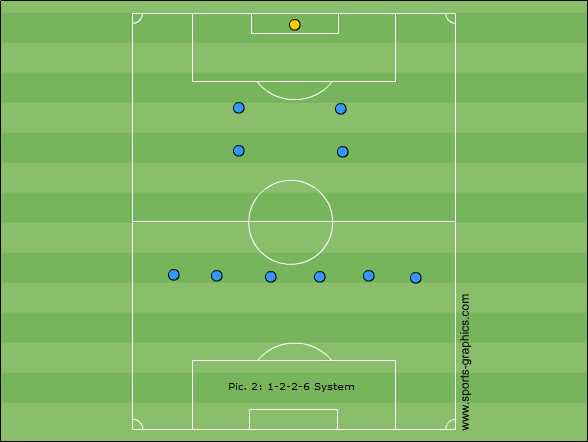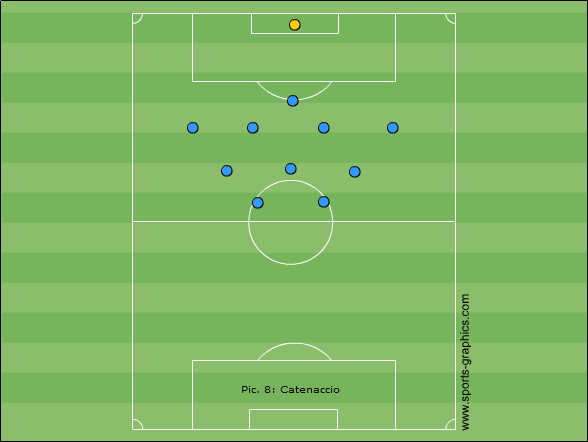Historical Development of Soccer Tactics (Part I):

Historical Development of Soccer Tactics (Part I):
The experience has taught that new tactics stemmed from rule changes or as an answer to perfected offensive and defensive tactics up until this point.
From a 1-1-9 to a 1-1-2-7

The Scottish National Team and many of the English clubs played a 1-2-2-6 enhancing the passing game and the build up out of the back. This system also reduced the workload for the defense by adding one more defender. Considering the overwhelming numbers in the attack, it is assumed that the defense applied zonal tactics.
The 1-2-3-5

The effects toward tactical strategies became more apparent due to rule changes in 1925 (e.g. off-side rule). Instead of three players only two players had to be positioned between receiver and goal line. This new offside rule created additional space for the attacking space. Hence, Coach Chapman (Arsenal coach at that time) added a stopper and took away a forward.
The Swiss Chain

In 1950 Brazil introduced the ‘open player’ positioned in front of the defense and moved in the direction of the ball. In contrast to the Libero (sweeper), this player was not involved in the attack.
The 4-2-4

Defending the goal took highest priority in Europe. Italian clubs developed the Swiss Chain further to enhance zonal defending and making the space even tighter for the opposing team to attack. In the ‘Catenaccio’ all the field players came back into their own half.
A floater was positioned behind the defense and three, sometimes four, midfielders were positioned in front of the defense to cover the middle of the field. The attack mainly consisted of counter-attacks.
(Please click here for Part II)




